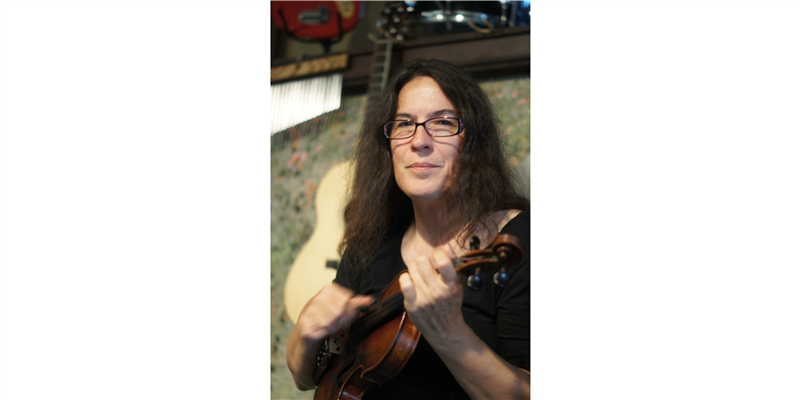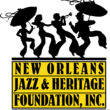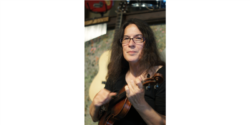Summer 2025
Fiddle Around
Gina Forsyth answered the call of the fais-do-do
Published: May 30, 2025
Last Updated: May 30, 2025

Photo by Charles Ward, courtesy of Gina Forsyth
Gina Forsyth, “one of Cajun music’s finest fiddlers.”
It took one of Cajun music’s finest fiddlers nearly thirty years to settle down in Cajun Country. Gina Forsyth, who was honored alongside five other artists and artisans plying and preserving heritage Louisiana craft during the state’s official Folklife Month in October 2024, was born in Florida and grew up in Alabama, arriving in New Orleans via a scholarship to study jazz and classical violin at Loyola University.
Forsyth remembers picking up a pamphlet at the Mobile church where she sang in choir as a child. “It said, ‘Do you want to major in music? Then listen to all kinds of music.’ So I did,” she said. That wasn’t difficult at her house, where her dad liked to play classic big-band swing records and popular folk acts like Pete Seeger and Peter, Paul and Mary. The country radio station introduced her to old-time fiddle and banjo tunes. Her older sister, who played keyboards in church, taught Forsyth her first chords on the guitar. An older brother, who was a successful touring sideman for country acts like Sammi Smith, Tex Ritter, and Waylon Jennings, showed her it was possible to do this for a living.
Had she followed him to Nashville with her fiddle, Gina Forsyth’s career could have been much different. But instead, she landed at Loyola’s music program in the middle of the ’80s, when rent in the city was cheap, independent music venues were flourishing, and Cajun music was enjoying a particular renaissance nationwide. In 1980, Cajun accordionist Bruce Daigrepont had started leading fais-do-do dances on Thursday evenings at the Maple Leaf Bar, located near the university Uptown. (Daigrepont’s band continues to play a fais-do-do at Tipitina’s monthly, more than forty years later.) Forsyth was DJing the country-music show on WTUL at the time, and Daigrepont helmed the Cajun show on WWOZ. Daigrepont lent Forsyth some 45s, which led to Forsyth sitting in with Daigrepont’s band, which led to a call from Sheryl Cormier, who knew Daigrepont’s mother.
Forsyth’s original work both carries the old-time torch and feeds its flame with the fresh oxygen of her humor and wry observation.
Cormier, born at the start of the baby-boom era in St. Landry Parish, is recognized as the first female accordion-playing bandleader in Cajun music, and in the ’80s she was putting together an all-women’s Cajun band. “And that’s where I learned the basics of Cajun music, the bread and butter of the traditional musicians,” Forsyth said, who commuted from New Orleans to play with Cormier’s new band in Opelousas or Lafayette. At the time, she didn’t have a car, so the bandleader would pick her up at the Greyhound station. Forsyth got acquainted with a laundry list of greats, and Antoine “Tony” Thibodeaux of the legendary mid-century Cajun dance band the Lafayette Playboys became a mentor.
Playing first mate, on fiddle, to an accordionist’s captain for a floorful of dancers is a special kind of expertise. “I wanted to be able to play anything an accordion player called and not be thrown off by it,” Forsyth said in her official Folklife Month honoree video. She honed her chops at Cormier’s side and as a permanent member of Daigrepont’s band at the weekly fais-do-dos back in the city, where she handled an impressive setlist of traditional waltzes and two-steps, plus Daigrepont’s originals, for more than two decades.
The gig with Daigrepont’s band started in the mid-90s, which was also a boom era for independent folk musicians. Forsyth, who’d been writing original songs on both fiddle and guitar at the same time as she was soaking up traditional Cajun repertoire, loved contemporary acts like the McGarrigle Sisters, the Indigo Girls and Dar Williams, and she took her own writing out into the thriving neo-folk world, becoming a regular at gatherings like the Kerrville Folk Festival in Texas and the traveling Folk Alliance International (which will return to New Orleans in 2026). On that song-swapping circuit she met Beth Cahill and Lisa Markley, and the trio became the Malvinas—named for feminist folk icon Malvina Reynolds—releasing three albums of sharp Cajun and Appalachian-inflected strings and chiming harmony. In the folk tradition, innovation is as essential an ingredient as revivalism and preservation, and Forsyth’s original work both carries the old-time torch and feeds its flame with the fresh oxygen of her humor and wry observation. The plaintive “Sparrows,” from her 2015 solo release The Fiddle EP, sounds like a song Cecil Sharp caught in the Blue Ridge Mountains a century ago. “Sweet and Sunny South,” a perennial fan favorite recorded for her critically lauded 2012 album Promised Land, is a slyly witty exploration of what the Drive-By Truckers call “the duality of the Southern thing,” side-eying a South where “Washington and Lee can’t get married legally.” (After the 2015 Supreme Court ruling, she amended the lyrics to “… can get married, finally!”)
It was love and marriage that, finally, transplanted Gina Forsyth from New Orleans to Acadiana for good. She wed Jan Boney, a French teacher and guitar player in Breaux Bridge, in 2016. Forsyth teaches music in the University of Louisiana at Lafayette’s School of Music and Performing Arts, and along with her wife (“she plays a mean triangle, too,” Forsyth said) routinely performs at traditional Cajun jams around the area, as well as at LGBTQ-focused events produced by the Acadiana Queer Collective, which was founded in 2021 to establish an Acadiana Pride celebration. She still commutes along I-10 for gigs, but in the opposite direction.
Alison Fensterstock is the editor of How Women Made Music: A Revolutionary History from NPR Music (Harper One, 2024) and the co-author of a forthcoming biography of New Orleans cartoonist and music writer Bunny Matthews (Historic New Orleans Collection Press, 2026).

Listen Up is funded in part by a grant from the New Orleans Jazz & Heritage Foundation.
